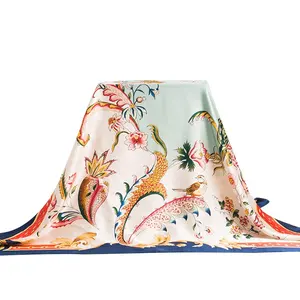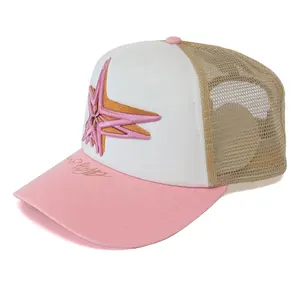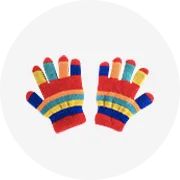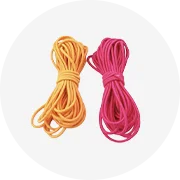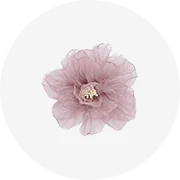Sektörünüzde popüler






Özel tasarım plastik Tortilla sarar çanta gıda selofan ambalaj saklama Roti Chapati ekmek ekmek ekmek paketleme poşeti
₺1,03 - ₺1,37
Minimum Sipariş Miktarı: 10000 Adet

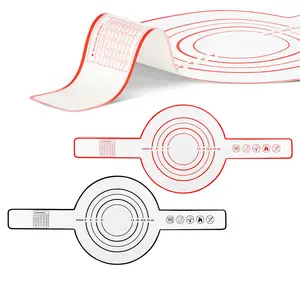




Yapışmaz silikon ekmek sapan silikon pişirme Mat kolay temiz güveç tenceresi ekmek Mat uzun sap ile Transfer Sourdough
Gönderime Hazır
₺24,63 - ₺51,32
Minimum Sipariş Miktarı: 50 Adet
Parça başına nakliye: ₺32,50







Toptan ekmek kral ekmek anlık kuru maya 500g kuru maya
Gönderime Hazır
₺71,84 - ₺78,68
Minimum Sipariş Miktarı: 10 Kilogram
Parça başına nakliye: ₺51.165,06







Gıda sınıfı ekmek ekmek ambalaj Kraft tasarım kağıt çanta özel ofset baskı kahverengi Kraft kağıt sandviç Donut ekmek poşeti
₺0,6842 - ₺4,45
Minimum Sipariş Miktarı: 10 Adet






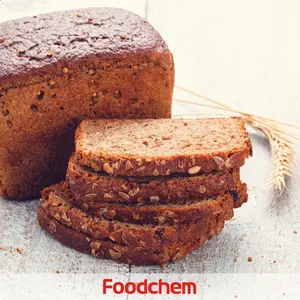
Ekmek/Şehriye Yapma Vital Buğday Gluteni VWG % 75% Protein
₺51,32 - ₺65,00
Minimum Sipariş Miktarı: 1000 Kilogram







Hint Chapati üreticisi bitki Lavash hattı otomatik düz ekmek yapmak küçük Tortilla makinesi
₺57.777,49 - ₺71.802,81
Minimum Sipariş Miktarı: 1 Takım






Hint yeni stil düz ekmek Jowar Roti üretim hattı makinesi fiyat ile düz ekmek sarar Pita rulo sarar yapma iyi satmak
₺2.360,36 - ₺2.702,44
Minimum Sipariş Miktarı: 1 Adet






Hint yeni stil düz ekmek Jowar Roti üretim hattı makinesi fiyat ile düz ekmek sarar Pita rulo sarar yapma iyi satmak
₺2.360,36 - ₺2.702,44
Minimum Sipariş Miktarı: 1 Adet






Gözleme yapma ticari hint düz ekmek yapmak yapışmaz roti robot chapati maker makinesi
₺18.814,46 - ₺21.209,03
Minimum Sipariş Miktarı: 1 Takım






Indian New Style Flat Bread Jowar Roti Making Line Machine With Price Flat Bread Wraps Pita Roll Wraps Making Sell well
₺15.701,52 - ₺17.069,85
Minimum Sipariş Miktarı: 1 Adet






Indian New Style Flat Bread Jowar Roti Making Line Machine With Price Flat Bread Wraps Pita Roll Wraps Making Sell well
₺15.701,52 - ₺17.069,85
Minimum Sipariş Miktarı: 1 Adet






Indian New Style Flat Bread Jowar Roti Making Line Machine With Price Flat Bread Wraps Pita Roll Wraps Making Sell well
₺15.701,52 - ₺17.069,85
Minimum Sipariş Miktarı: 1 Adet






Indian New Style Flat Bread Jowar Roti Making Line Machine With Price Flat Bread Wraps Pita Roll Wraps Making Sell well
₺15.701,52 - ₺17.069,85
Minimum Sipariş Miktarı: 1 Adet






Otomatik Roti Maker/makine Gözleme Yapmak için/roti/chapati/chapatti/düz Ekmek/gözleme
₺34.208,10 - ₺51.312,15
Minimum Sipariş Miktarı: 200 Takım






Pide ekmek pişirme döner fırın shaobing pizza naan ekmek fırını
₺34.208,10 - ₺47.891,34
Minimum Sipariş Miktarı: 1 Takım






Elektrikli otomatik manuel düz ekmek 14 inç Tortilla basın ticaret makinesi arapça ince gözleme hint ekipmanları yapmak
₺34.173,90 - ₺44.436,33
Minimum Sipariş Miktarı: 1 Takım






Gelişmiş gaz tipi Tortilla pişirme fırını ile arapça Roti yapma makinesi lezzetli ve üniforma Pita ekmek oluşturmak için mükemmel
₺19.840,70 - ₺44.470,53
Minimum Sipariş Miktarı: 5 Takım






Rumali Jowar endüstriyel ısı ince düz ekmek 30cm Pancake Roti yapmak Tortilla ısıtıcı basın makinesi el ile manuel
₺34.173,90 - ₺44.436,33
Minimum Sipariş Miktarı: 1 Takım






Yeni varış Lavash ekmek makinesi makine hint flatbread Rumali roti taco yapma makinesi wrap roti üretmek makinesi
₺324.976,95
Minimum Sipariş Miktarı: 1 Takım

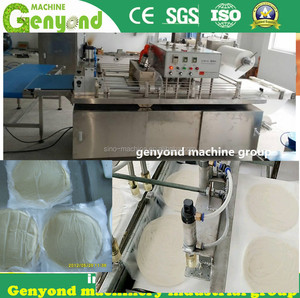



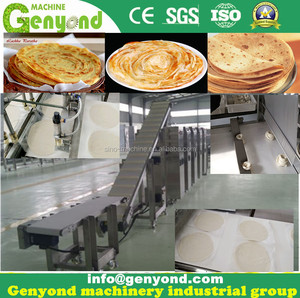
Shanghai fabrika muntifuction Lacha paratha ekmek kaplama presleme rulo film kapsayan biçimlendirme makinesi üretim hattı
₺1.135.708,92
Minimum Sipariş Miktarı: 1 Takım

Lumpia makinesi tam otomatik hidrolik ekmek Pancake Chapati Tortilla Pizza el Pita kullanılan Roti yapmak hamur pres makinesi
₺34.173,90 - ₺44.436,33
Minimum Sipariş Miktarı: 1 Takım






Dondurulmuş naan ekmek hint ekmek yapma makinesi
₺68.382,00 - ₺157.323,06
Minimum Sipariş Miktarı: 1 Takım






Otomatik yumuşak taco yapma makinesi/un tortilla düz taco makinesi makinesi/yumuşak mısır ince ekmek yapma makinesi meksika tacos
₺51.312,15
Minimum Sipariş Miktarı: 1 Birim






Ticari manuel pide Shawarma kebap Empanada en iyi ekmek Baker makineleri pişirme ekipmanları seti araçları
₺37.628,91
Minimum Sipariş Miktarı: 1 Takım






Otomatik hamur düz presleme makinesi/hamur presleme hint Khakhra yapma makinesi/pizza hamur presleme makinesi
₺12.485,96 - ₺46.386,19
Minimum Sipariş Miktarı: 1 Takım






Ticari arap pide ekmek makinesi fırın tünel gaz fırın arapça Roti yapma makinesi Pizza yuvarlak gaz pişirme fırını
₺19.840,70 - ₺44.470,53
Minimum Sipariş Miktarı: 5 Takım






Shineho yeni Trend ürün taşınabilir tandır fırın hint Naan ekmek makinesi Chapati yapma makinesi satılık ev için
₺28.597,98 - ₺32.497,70
Minimum Sipariş Miktarı: 1 Adet






Düz Naan Rotimatic Tortilla pişirme doğal gaz Chapati döner yeni hindistan Roti Pita ekmek Tandoor fırın
₺28.392,73
Minimum Sipariş Miktarı: 1 Takım






Çin mısır meksika tortilla chapati hint taco roti düz arap pide ekmek pizza yapma makinesi üreticisi
₺53.022,56 - ₺68.416,20
Minimum Sipariş Miktarı: 1 Takım






Elektrikli matic hint düz ekmek naan tam otomatik otomatik chapati gözleme makinesi yapma makinesi 12 inç mekar için ev kullanımı yapılan
₺18.096,09 - ₺85.486,05
Minimum Sipariş Miktarı: 1 Takım





Ticari arapça Pita ekmek makinesi fırın tünel gaz fırın arapça Roti yapma makinesi Pizza yuvarlak gaz pişirme fırını
₺34.208,10
Minimum Sipariş Miktarı: 1 Takım






Ticari otomatik Chapati mısır düz ekmek yumurta gözleme Roti Tortilla makinesi yapma makinesi
₺68.416,20
Minimum Sipariş Miktarı: 1 Takım






Isıtma fırın 18 tepsi döner raflı fırın paslanmaz çelik Pizza Pita ekmek yapma makinesi döner fırın pişirme dükkanı makineleri fiyat
₺136.832,40 - ₺171.040,50
Minimum Sipariş Miktarı: 1 Adet






Tortilla çip basın hamur kaplama makinesi hattı düz ekmek makineleri elektrikli hint Roti Chapati Lavash yapma makinesi basarak
₺256.560,75 - ₺283.243,07
Minimum Sipariş Miktarı: 1 Takım






Fırın hint naan yapma makinesi/rus pide ekmek yapma makinesi/döner gözleme gaz fırın
₺39.339,32 - ₺41.049,72
Minimum Sipariş Miktarı: 1 Takım






BP400 küçük Chapati Tortilla otomatik dondurulmuş düz ekmek yapma makinesi
₺287.348,04 - ₺294.189,66
Minimum Sipariş Miktarı: 1 Takım






36-40cm 14in pizza basın hint düz ekmek makinesi roti makine üreticisi otomatik
₺68.416,20
Minimum Sipariş Miktarı: 1 Takım






Hint Flatbread Paratha yapma makinesi Chapati Maker Roti basın
₺23.261,51
Minimum Sipariş Miktarı: 1 Takım






Yarı-otomatik hint mısır naan ekmek basın şekillendirme makinesi/düz tortilla yapma makinesi
₺34.208,10 - ₺85.520,25
Minimum Sipariş Miktarı: 1 Takım






Otomatik un mısır meksika Tortilla Chapati hint Taco Roti düz arap pide ekmek Pizza tabanı kabuk yapma makinesi
₺61.574,58 - ₺119.728,35
Minimum Sipariş Miktarı: 1 Takım
En iyi kategoriler
hint düz ekmek hakkında
Muazzam koleksiyonuna göz atın. Alibaba.com'da her yaştan, vücut tipinden ve stil tercihlerinden kadın için ideal olan hint düz ekmek. Bunlar olağanüstü. hint düz ekmek estetik görünümleri açısından sadece şık ve tasarımcı değil, aynı zamanda üstün kaliteli kumaşlardan yapılmış kalite açısından da üstündür. Mesleğiniz ne olursa olsun, bunlar. hint düz ekmek, onları giyerken gün boyunca rahatlık sağlayabilir. Yumuşaktırlar, rahattırlar ve en önemlisi her zaman kullanımları hijyeniktir.
Söz konusu olduğunda. hint düz ekmek, müşteriler her zaman bir takım giysilerin altına giyildiklerinden ve ciltlerine özen gösterilmesini talep ettiklerinden, konfor seviyelerinden ödün vermek istemezler. Muhteşem ve hijyen artırıcı. Sitede bulunan hint düz ekmek, cildinize çok hassas bir şekilde oturan ve her zaman rahat nefes almasını sağlayan yüksek kaliteli polyester, spandeks, pamuk, ipek, poliamid ve diğer malzemelerden yapılmıştır. Üstelik bunlar harika. hint düz ekmek düz boyalıdır ve cildinizi engelleyebilecek zararlı renklerden oluşmaz.
En sevdiğiniz ürünü seçebilirsiniz. Alibaba.com'un tarzınıza uyacak çeşitli tasarım, şekil, boyut ve renk koleksiyonundan hint düz ekmek. Bunlar. hint düz ekmek, tüm şekil ve tercih türlerine uyan boyutlarda gelir. Bunlar. hint düz ekmek nefes alabilir, antibakteriyel ve anti statik olup, hijyeninizin korunmasında ve sürdürülmesinde son derece faydalıdır.
Farklı bir sunucu için Alibaba.com'u ziyaret edin. Satın alırken tasarruf etmenize yardımcı olabilecek hint düz ekmek. Bu ürünler OEM siparişlerinde mevcuttur ve özel olarak paketlenebilir. İçin toplu siparişlerdeki fırsatların tadını çıkarın. hint düz ekmek tedarikçiler ve toptancılar.
Söz konusu olduğunda. hint düz ekmek, müşteriler her zaman bir takım giysilerin altına giyildiklerinden ve ciltlerine özen gösterilmesini talep ettiklerinden, konfor seviyelerinden ödün vermek istemezler. Muhteşem ve hijyen artırıcı. Sitede bulunan hint düz ekmek, cildinize çok hassas bir şekilde oturan ve her zaman rahat nefes almasını sağlayan yüksek kaliteli polyester, spandeks, pamuk, ipek, poliamid ve diğer malzemelerden yapılmıştır. Üstelik bunlar harika. hint düz ekmek düz boyalıdır ve cildinizi engelleyebilecek zararlı renklerden oluşmaz.
En sevdiğiniz ürünü seçebilirsiniz. Alibaba.com'un tarzınıza uyacak çeşitli tasarım, şekil, boyut ve renk koleksiyonundan hint düz ekmek. Bunlar. hint düz ekmek, tüm şekil ve tercih türlerine uyan boyutlarda gelir. Bunlar. hint düz ekmek nefes alabilir, antibakteriyel ve anti statik olup, hijyeninizin korunmasında ve sürdürülmesinde son derece faydalıdır.
Farklı bir sunucu için Alibaba.com'u ziyaret edin. Satın alırken tasarruf etmenize yardımcı olabilecek hint düz ekmek. Bu ürünler OEM siparişlerinde mevcuttur ve özel olarak paketlenebilir. İçin toplu siparişlerdeki fırsatların tadını çıkarın. hint düz ekmek tedarikçiler ve toptancılar.




